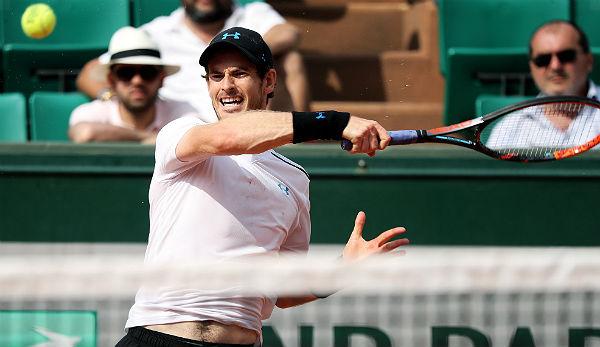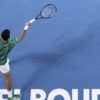Tennis
Service: The small step in the return process
Why it is so important to take a step forward in return.
You are standing at the baseline ready to return. You know your opponent usually serves on your backhand. That’s why you’re smart and move your position a little bit into your backhand corner. Your opponent starts tapping the ball. You fix the ball, take the bat up and shift your body weight downwards by kneeling slightly. Your upper body goes a little bit forward with this movement. You are now ready for your return while your opponent begins to serve. The ball comes towards you, you swing out – and hit the ball too late. Your return flies out from your cover two meters sideways and you don’t know what you did wrong with your return.
If you are exposed to an extreme headwind, it is difficult to maintain balance when standing upright. You may want to use your arms to help you keep your balance in the storm. You will get a much better and more stable standing if you shift your weight forward and take one or two small steps forward. You get a better balance and can face the storm with just one small movement.
Let’s go back to your return. If your opponent’s serve is the storm, you’ll get a better feel for the return if you take an offensive approach to this serve and take one or two small steps towards it. Alexander Zverev and Andy Murray apply this method in perfection. If you watch both players at the return, you can hardly tell them apart by their movements. Both players face the opponent’s serve on return one to two meters.
When you approach the ball on return, you play the return from the movement. If you stand relaxed at the baseline and play a ball without moving too much before, you lack the body tension and the movement to the ball. Instead, if you choose to prepare for the shot by approaching the ball and moving well, the shot will be easier for you. This also applies to your return. For example, if you have major problems in a match with controlling the return and safely replaying it, going into it can help you. Like Zverev or Murray, you don’t have to take big, laborious steps forward. It’s enough if you just move forward a little bit.
But when is the best time to face your opponent’s serve? Timing is everything. And you get the best timing when you think about your opponent’s serve movement. Your powers of observation will help you. Memorize your opponent’s moves as best you can. After a few serves, you will know how long the time between the start of the serve and the ball’s point of impact is at your opponent’s serve. As soon as your opponent starts throwing the ball, you should prepare for your return and start to orientate yourself forward.
If you are looking forward, it is important that you play the return from a fluid movement. If you come to a complete standstill after the confrontation, your advantage has disappeared. So do not hesitate, but be self-confident when moving forward. This method of returning allows you to take your opponent’s serve earlier and use the speed of your opponent’s serve for you. The master of the return, Novak Djokovic, has pulled the teeth of each of his opponents at his best with this very tactic. Even if your opponent is serving hard, you should try this tactic for yourself. As is so often the case with tennis, a lot of things stand and fall with your self-confidence in the respective playing situation. But even if your self-confidence has lost its way in the meantime, you can use this tactical variant with two or three good returns to pull the momentum back to your side. So don’t be afraid of big serve and test this method on the return for your game.













You must be logged in to post a comment Login